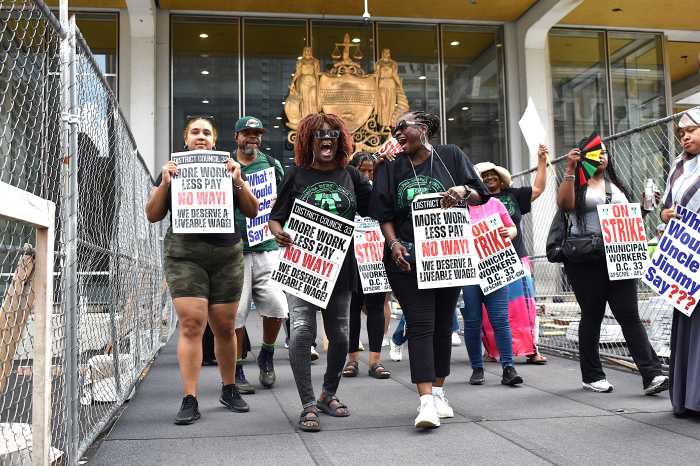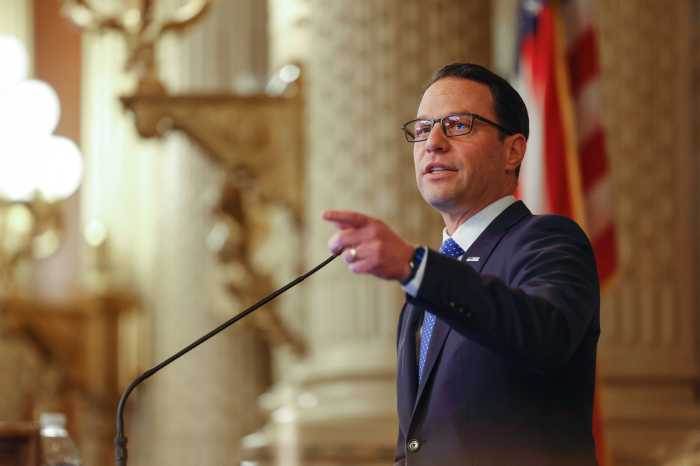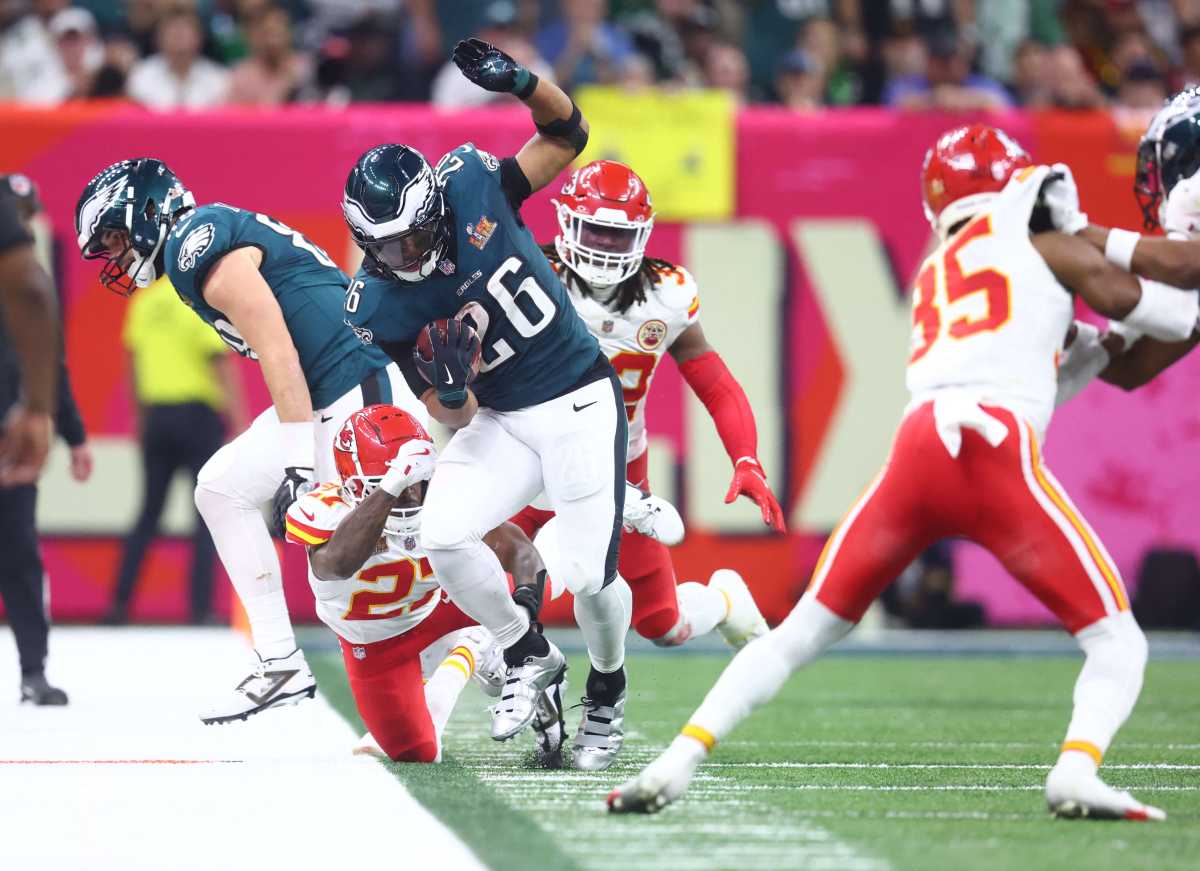A case has been cracked, and Philly is right at the center of it.
In 2019, the FBI solved a 50-year-old cold case concerning artifacts stolen from six Philadelphia-area museums, and this past weekend, a repatriation ceremony was held by the Federal Bureau of Investigation Art Crime Team – Philadelphia Division at the Museum of the American Revolution (MoAR) to return those coveted items back where they belong.
The American Swedish Historical Museum, Hershey Story Museum, Landis Valley Museum, Mercer Museum, MoAR and York County History Center all received artifacts that were recovered through the efforts of the FBI Art Crime Team, the United States Attorney’s Office, and the Upper Merion Township Police Department. There were 15 items in total, most of which were historic firearms from the 18th and 19th century, including rifles and pistols, and a Native American concho belt.
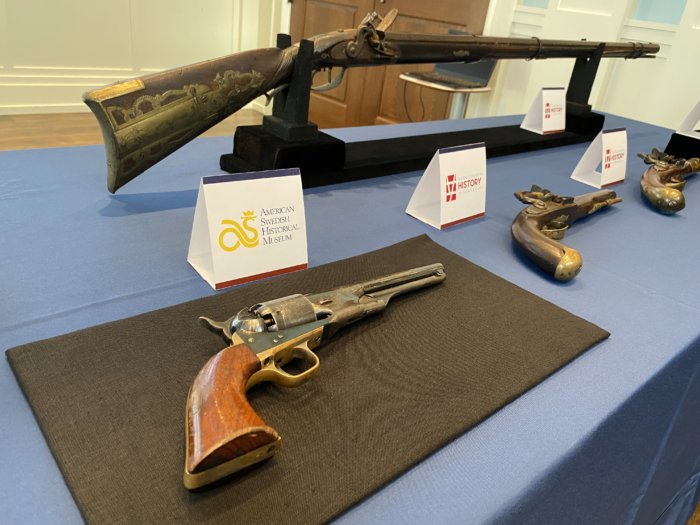
“It is incredibly significant and exciting for us to be joined by all of these local institutions today and to see them reunited with objects that have been missing for half a century,” said Dr. R. Scott Stephenson, president and CEO of MoAR, in a statement. “Our collections are used as tools to engage our audiences in an appreciation of history and to reinvigorate their civic commitment – it’s the foundation of all of our missions. We are incredibly grateful to the FBI and law enforcement for their tireless work to bring these items home.”
The recovered artifacts included the return of a rare firearm made by gunsmith Christian Oerter, which was stolen in 1971 when it was on display at Valley Forge Park, according to a news release. The rifle, which is on loan from the Pennsylvania Society of Sons of the Revolution and its Color Guard, is now on display in the MoAR’s special exhibition “Liberty: Don Troiani’s Paintings of the Revolutionary War,” which is on view through September 2022.
“In law enforcement, as in any profession, there are good days and bad days. Today, standing here along with our partners, is one of those good days,” added Jacqueline Maguire, special agent in charge of the FBI’s Philadelphia Division, in another statement. “The absence of the items from these museums represented not just a physical or financial loss, but a loss to every visitor, every student, and every researcher who didn’t get to see the items over the years and missed out on important pieces of our nation’s heritage. The absence of these items was, for so long, a loss to the historical record. The FBI is honored to have helped correct that loss and return these artifacts to the institutions from which they were stolen so long ago.”
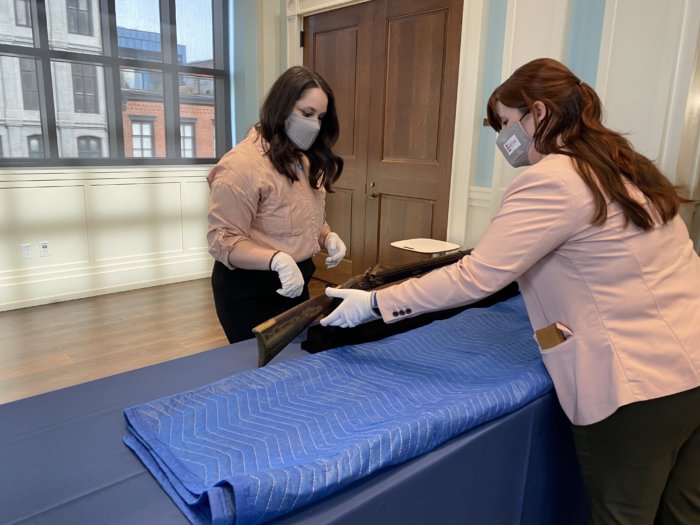
Thomas Gavin, the man who admitted to the thefts that were committed over a two-decade period in the ’60s and ’70s, recently received one day in jail as his punishment. Gavin, 78, was lucky in a sense that the statutes of limitations on many of his other thefts had expired (plus some of the places he hit no longer exist), and he was left with one count of disposal of an object of cultural heritage stolen from a museum.
Because of his age and his health-status, what could have been a 10-year maximum sentence is now the single day in prison, one year of house arrest, two additional years of probation, and just about $50,000 in fines.
As artnews.com reports, over the 20-some years he was active, Gavin pilfered rifles, revolvers, and other historic artifacts made in the 18th and 19th centuries. Among them was a firearm owned by John James Audubon, filched from the Academy of Natural Sciences in Philadelphia. The Oerter gun, however, was likely his biggest prize. Manufactured in 1775, the 5-foot long weapon is one of only two flintlock rifles bearing the gunmaker’s name in existence today. The other belongs to the Royal Collection at Windsor Castle in England.
How was Gavin caught? In 2018, the thief tried to sell that rare, Revolutionary-era rifle to an antiques dealer, Kelly Kinzle. The gun, which is valued at $175,000, was sold to Kinzle for $4,000 under the presumption that it was a copy of the original, and it was after a period of research and an inkling that the dealer realized what he had actually purchased.
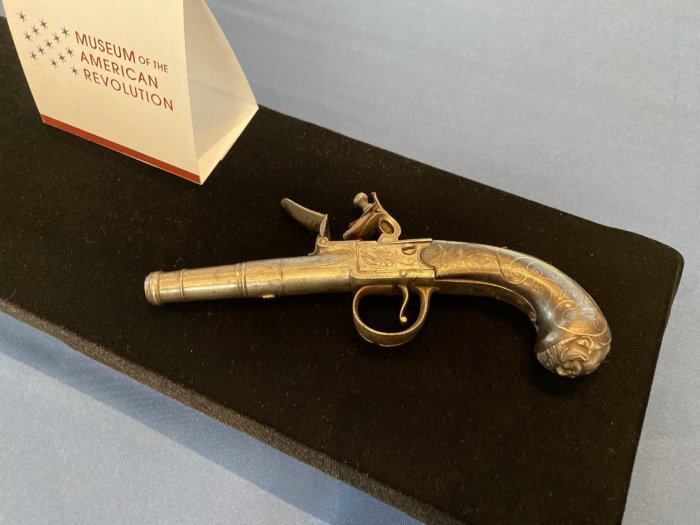
The gun is now on display at MoAR, where it’s on loan from the Pennsylvania Society of Sons of the Revolution. The release also states that through the repatriation, MoAR received a French gendarmerie flintlock pistol and a pair of Ward & Steele Queen Anne flintlock pistols, which were stolen in 1970, and a French Model 1777 Charleville pistol, which was stolen in 1972. The items were stolen from the Valley Forge Historical Society, which transferred its distinguished collection to the Museum in 2003.




